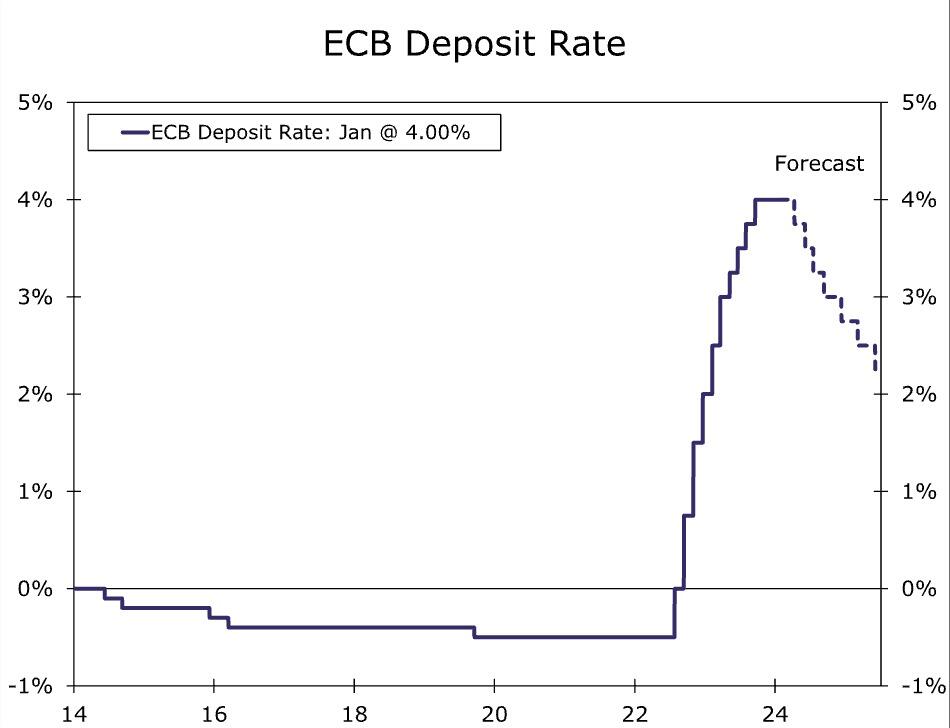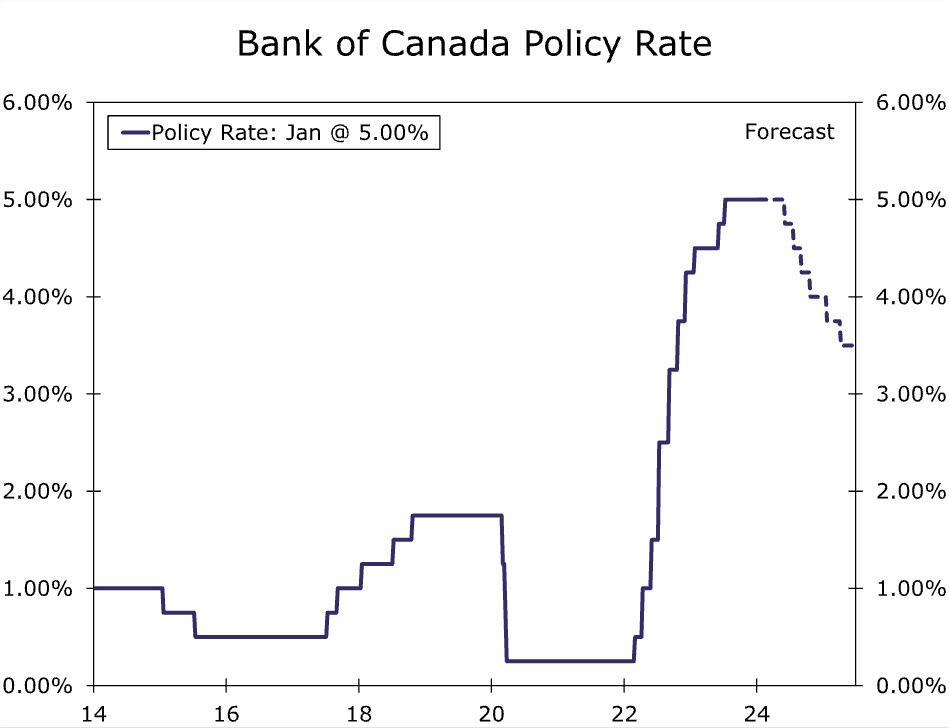Summary
It was a busy week for foreign central banks, with several offering their first monetary policy assessment of 2024. The Bank of Japan held monetary policy unchanged, but its announcement and updated economic forecasts kept it on track for an April rate hike, in our view. The Bank of Canada’s announcement was modestly dovish in tone, suggesting some risk that an initial rate cut could come earlier than our base case for monetary easing in June. The European Central Bank had offered hawkish guidance ahead of this week’s meeting, but its announcement was arguably more neutral in tone. Given downbeat economic trends and the ECB’s data dependence, our base case remains for an initial rate cut in April, although we acknowledge the risks are tilted toward a later move in June. Finally, the People’s Bank of China lowered its Reserve Requirement Ratio to provide long-term liquidity to the market. While that could offer some support to the economy, we still expect China’s GDP growth to be slower in 2024 than 2023.
Foreign central banks kick off 2024
It was a busy week for foreign central banks, with several institutions making their first monetary policy announcements of this year, and offering insight to the potential paths of their respective monetary policy stances through 2024. The European Central Bank (ECB) monetary policy announcement was perhaps not quite as hawkish as expected. In the lead up to this meeting, ECB President Lagrade suggested a rate cut was likely by or in the summer, and some of the more hawkish policymakers suggested the summer or later. ECB policymakers have also indicated a desire to see early 2024 wage data before adjusting their monetary policy stance. However, considering this leadup, the ECB’s policy announcement was perhaps more neutral in tone. The ECB reiterated that it “considers that the key ECB interest rates are at levels that, maintained for a sufficiently long duration, will make a substantial contribution” toward returning inflation to its 2% medium-term target in a timely manner. The ECB also again highlighted a data-dependent approach to conducting monetary policy. On that front, the ECB said the declining trend in underlying inflation has continued, and that past interest rate increases continue to be “transmitted forcefully into financing conditions. Tight financing conditions are dampening demand, and this is helping to push down inflation.” While ECB policymakers have guided market participants toward summer rate cuts, their assessment on the Eurozone economy appears notably underwhelming. As a result some market participants, including ourselves, still see potential for ECB easing to come earlier, during the spring.
This dichotomy between the ECB’s policy guidance and its assessment of the economy was also apparent during ECB President Lagarde’s press conference. She said the consensus was that a rate cut debate was premature, and she stood by her comments on summer rate-cut timing. At the same time, she said data signal economic weakness in the near-term, that the December inflation rebound was less than expected and almost all underlying measures fell in December. She added that short-term inflation expectations gauges are down markedly, and did not over-emphasize the inflationary risks from the Red Sea crisis. Combining the policy guidance with the assessment of the economy, the upcoming data should still be key as to the exact timing of an initial ECB rate cut. If GDP growth stays soft, sentiment surveys remain in contraction territory and underlying inflation continues to improve, then the rate cut debate could intensify in March and April, and monetary easing in April (for now still our base case) remains possible. However, should activity or sentiment data show some resilience, or improving inflation trends get interrupted, the June meeting will come more clearly into focus as the most likely timing for initial ECB easing.


Source: Datastream and Wells Fargo Economics


Source: Bloomberg Finance L.P. and Wells Fargo Economics
Download the full international commentary




